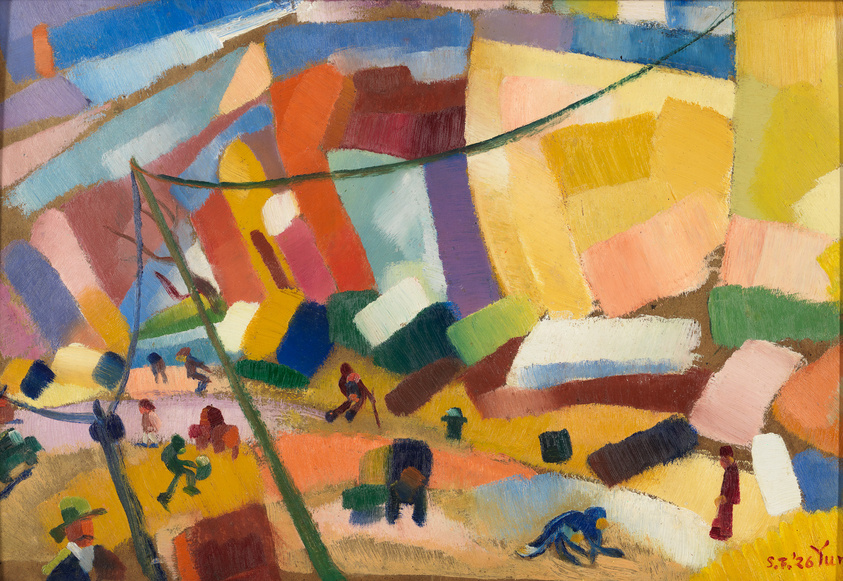At the Dawn of a New Age: Early Twentieth-Century American Modernism | Art & Artists
May 7, 2022–Feb 26, 2023
At the Dawn of a New Age: Early Twentieth-Century American Modernism | Art & Artists
Yun Gee
15
Born 1906 in Kaiping, China
Died 1963 in New York, NY
Yun Gee immigrated to San Francisco in 1921. Introduced to European modernism at the California School of Fine Arts, he embraced color as a carrier of spatial and emotional properties. Gee was an integral member of San Francisco’s avant-garde, helping to cofound the Modern Gallery and the Chinese Revolutionary Artists’ Club, where he taught young Chinese painters technique and color theory. In his paintings of San Francisco’s Chinatown, such as Street Scene, Gee combined Cubist structure with a high-key palette, rhythmically balancing his color-forms to inflect scenes of everyday life with an animated vitality. Even after leaving San Francisco in 1927, Gee remained committed to using European modernism to depict his experiences and identity as a Chinese American. Asked once why he did not paint using conventional Chinese techniques, he replied, “Because I am living in a modern industrial society.”
Street Scene, 1926
Artists
- Richmond Barthé
- Ben Benn
- Albert Bloch
- Oscar Bluemner
- Patrick Henry Bruce
- Charles Burchfield
- Arthur B. Carles
- John Covert
- E.E. Cummings
- Imogen Cunningham
- James Daugherty
- Arthur B. Davies
- Stuart Davis
- Manierre Dawson
- Charles Demuth
- Isami Doi
- Aaron Douglas
- Arthur Dove
- Charles Duncan
- Yun Gee
- Marsden Hartley
- Rebecca Salsbury James
- Loïs Mailou Jones
- Taizo Kato
- Gaston Lachaise
- Blanche Lazzell
- Stanton Macdonald-Wright
- Man Ray
- John Marin
- Elie Nadelman
- Louise Nevelson
- Carl Newman
- Isamu Noguchi
- Chiura Obata
- Georgia O'Keeffe
- Walter Pach
- Agnes Pelton
- Nancy Elizabeth Prophet
- Henry Lyman Sayen
- Charles G. Shaw
- Harry Shigeta
- Henrietta Shore
- Pamela Colman Smith
- Joseph Stella
- Florine Stettheimer
- John Storrs
- Henry Fitch Taylor
- Helen Torr
- Jay Van Everen
- Adele Watson
- Max Weber
- Edith Clifford Williams
- Marguerite Zorach
- William Zorach

